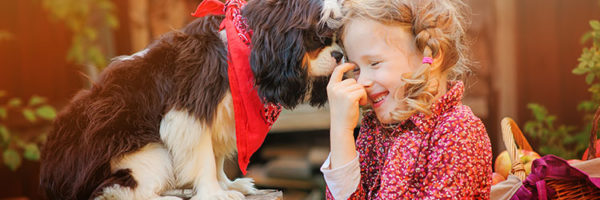We’ve had a love for pets ever since early man first trained wolves to obey commands. You won’t find many wolves in family homes today, but dogs, cats, birds, hamsters and rabbits are commonplace.
Unsurprisingly, young children are particularly fond of having their own pet.
This guide will look at the impact pets have on children, what it takes to own a pet, and will demonstrate how a pet is a healthy addition to any child’s upbringing.
Special Needs Children and Pets
1. Pets in a Family Home
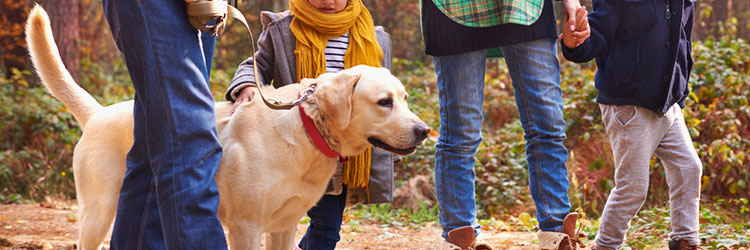 The most recent statistics suggest there are as many as 19 million pets in UK households (excluding fish) – across 40% of the nation’s properties. That number alone highlights the love we have for pets. Let’s take a closer look at the impact of pets in the family home.
The most recent statistics suggest there are as many as 19 million pets in UK households (excluding fish) – across 40% of the nation’s properties. That number alone highlights the love we have for pets. Let’s take a closer look at the impact of pets in the family home.
Common reasons to get a pet as a family
With plenty of benefits to owning a pet – whether you’re a child or an adult – it’s no surprise so many people want to bring one into their home. But there are different motivations for buying a pet. Some of the most common include:
- Companionship – Single people and families alike look to animals to provide companionship. Unconditional love is rare in life, but it’s surprisingly common among certain pets. This is particularly the case with dogs, who some scientists believe can understand our emotions. Having a pet who’s utterly devoted to you is appealing for many people.
- Entertainment – Pets shouldn’t be welcomed into the home purely as a form of entertainment, but it’s a natural by-product. Most people have, at some point, played with an animal and experienced joy. Whether it’s playfully teasing a cat to chase a laser pointer, or letting a hamster run loose in the house inside its ball, most families get great enjoyment from playing with pets.
- Benefiting your child – As we’re going to discover throughout this guide, your child will benefit from the presence of a pet. Mental and physical health will both be improved, while life lessons will be learnt along the way.
Whatever your motivations, owning a pet can be a rewarding experience.
Best pets for a young family
Regardless of why you want to make an addition to your family, it’s still a tricky choice deciding which type of animal to go for. Here are some top suggestions for families looking to get a pet:
- Fish – Often overlooked, fish are a suitable choice for a young family. They take up barely any space, and require minimal levels of maintenance. Feeding is once a day, with tanks cleaned once a week. The relative ease of keeping fish makes them perfect for young children as a learning tool.
- Rabbits – A smart edition to the family if you have toddlers who like to get hands on. Rabbits are small enough for a cuddle, but again heighten the responsibility levels of a family. You also have the choice of whether you’d like an inside or outside bunny.
- Hamsters – Similar to rabbits, hamsters provide younger children with a good chance to interact with a small animal. Like fish, they don’t take up much room in the home. It’s for this reason they prove such a popular option.
- Cats – Making up 17% of the pets owned in the UK, cats are a tried and tested success on the pet front. Most cats like to spend time inside and outside, and will usually live for 15 to 18 years. A cat is seen by many as requiring less effort than our last animal, so consider this when making a decision.
- Dogs – Nobody will be shocked to see dogs complete our list. Canines are loyal pets, who love to play and need a lot of care and attention. They’re a good option for families who are looking to teach children responsibility.
There are plenty of good options available for families, but these five often stand out as the most popular. Whether it’s for ease, the values they help teach, or other factors, most first-time pet owners opt for one of this bunch.
Finding a budget for a pet
A pet is a major new addition to your life, so it’s important you’re able to cope with the initial and ongoing costs. The easiest way to make sure the pet you want is affordable is by breaking down the costs of your new family member over time.
Some of the common costs of pet ownership include:
- Initial purchase – The upfront cost you have to pay for a pet will vary. If you’re looking to purchase a pedigree puppy you may have to pay anywhere up to £5,250. While this is an extreme example, it speaks volumes about the value of some animals. Do your research and find a pet that matches your financial situation.
- Medical costs – Pets aren’t automatically covered for medical expenses. Pet surgeries, vaccinations and even check-ups could cost a lot of money. A great way of planning for your pet’s medical costs is to take out pet insurance. For a monthly fee your pet will be covered for illness and injury up to a specified amount. If you’re undecided, consider if you’d be able to find the money to cover an unexpected trip to the vets? The average pet insurance claim is £679, according to ABI.org.
- Food – How much you need to feed your pet will vary depending on its size and breed. Even cat food will cost as much as £15-£20 per month. You should also be aware that some animals will have special dietary requirements – just like some people – which will cost more to provide.
- Grooming – You’ll likely associate grooming with owning a dog, but cats also need some care when it comes to looking after their coat. The difference being that you may wish to take a dog to a specialist groomer, but will probably be able to manage your cat’s grooming at home. How regularly your pet needs grooming will depend on its hair length.
- Equipment – Includes the likes of a lead, toys, a litter box, an aquarium, a hutch and a cage. Some of these items are essential for your pet’s wellbeing, while others are a luxury.
Just as with humans, different animals will have various habits and requirements. For example, the annual cost of owning a dog will be more than a fish. Look into prices and decide if you’ve got the resources to cope with bringing an animal into your home.
2. The Key Benefits for Children
 Deciding to get a pet can have a series of benefits for a child. Let’s explore some of the positives a child will experience if they regularly interact with a pet.
Deciding to get a pet can have a series of benefits for a child. Let’s explore some of the positives a child will experience if they regularly interact with a pet.
Mental and emotional health
In an age where mental health is championed, it would be wrong to overlook this factor. Animals have a proven positive impact on a person’s mental wellbeing. At a time when the development of a person’s emotional capabilities is at its most impressionable (childhood), the addition of a pet can be beneficial.
- Stress relief – Pet therapy is an increasingly popular form of stress relief. People stroke, or interact with, an animal to reduce anxiety levels. This is caused by the body releasing endorphins after coming into contact with a loving pet.A stroking or patting motion has a therapeutic impact on a child (or adult), triggering this natural reaction. Endorphins are effectively the chemicals in our brains which make us happy. They naturally lower stress and anxiety. This could have a significantly positive impact on a child’s mental strength over time.
- Boosted self‐esteem – Self‐confidence doesn’t come naturally to everyone. But pets don’t judge. Treat them well, and they’ll be your friend for life.This is particularly helpful for kids who struggle to make friends. It isn’t easy for everyone to start up a conversation with strangers. Having a pet who makes them feel appreciated and secure can improve independence and confidence.
- Emotional maturity – Understanding that some things will come before your own desires is an important lesson in maturity for children. While it doesn’t need to be constantly hammered home, learning when to prioritise a pet’s needs will help them grow into a responsible adult.
Physical wellbeing
It’s not just on a psychological level where pets can have a positive impact on your life. Physical wellbeing is also boosted when an animal is introduced into the family environment. This happens in different ways.
- More active lifestyle – It perhaps goes without saying that owning a pet can encourage you to have a more active lifestyle. This is particularly true in the case of dogs, who need to be exercised to remain happy and healthy. A study found that children who have a dog get an additional 11 minutes of exercise a day compared to those who don’t.Allowing a child to go on regular walks, and encouraging them to clean up after an animal, will have a positive impact on their daily exercise.
- Developing immunities – Studies into childhood illnesses have suggested that living with a pet in the house from birth increases a child’s immune system. It’s believed this is the result of a pet bringing dirt into the family home. Babies and young children then adapt to the conditions, strengthening their immunity.It’s also suggested that allergies can be prevented if animals are introduced to a child at a young age. Coming into contact with pets in the early stages of life can give the body time to adjust and fight against the types of bacteria which cause allergic reactions.
- Healthier heart – As we previously mentioned, stress levels will be seriously reduced if you’re regularly given the chance to stroke an animal. As well as releasing endorphins to make them happier, a child will also experience a lower blood pressure.The heart also benefits from any forms of cardiovascular exercise, which can be achieved by walking a dog, or playing with a pet.
Life lessons from owning a pet
Children can also learn valuable lessons from caring for a pet, including:
- Responsibility – We’ve already touched on it briefly, but owning a pet boosts responsibility levels. Aside from putting an animal first, it also teaches kids to actively think about their decisions – and stick to them. Caring for a pet forces a child to step up and fulfil duties and roles they might not have to otherwise.Activities such as feeding, cleaning up after or walking a pet are great ways for children to learn about responsibility. It makes them accountable for an animal’s wellbeing, and gives them obligations to fulfil. It’s a healthy type of pressure.
- Socialising – If a child suffers from social anxiety, a pet can give them gentle encouragement. This is a condition which often develops in adolescent years, and is hard to combat. Having a pet which forces someone to get out and potentially interact with others is a good way of supporting progress. A child can tackle their demons head-on, with the comfort blanket of having their pet alongside them.On occasion, strangers will stop someone with a dog to talk to them about it. Times like these are the perfect chance to brush up on social skills. They’re also a handy reminder that most people are actually quite friendly – a concern children suffering from social anxiety worry about. Of course, ensure an adult is always supervising and teach children to beware of strangers if out alone.
- Future Parenthood – It’s a long way off yet for a child, but taking care of a pet teaches a very basic form of parenting. Traits which they’ll need during this stage of their life will become deep-rooted in these early years. While it won’t be obvious to them at the time, an experience with a pet can be drawn upon when dealing with kids of their own.This includes:
- Sticking to a rough routine
- Feeding and cleaning a pet
- Putting their pet’s needs first
- Keeping them medically healthy and cleaning up after they’ve made a mess
It might not seem like it at the time, but this could make a huge difference on their approach to parenthood in the future.
- Basic life values – Kids can also pick up important values from their pets. The most notable of these is empathy. Learning to care for a pet which depends heavily on them, teaches a child how important it is to understand the emotions of others.Having a rough understanding of what their pet is going through will help to develop a sense of caring. This can be applied across all areas of life.
For most children with pets, these factors will stand out as some of the primary benefits. While individual lessons might be learnt from an animal’s personality, these are the kinds of things which every child picks up from pet ownership.
3. Special Needs Children and Pets
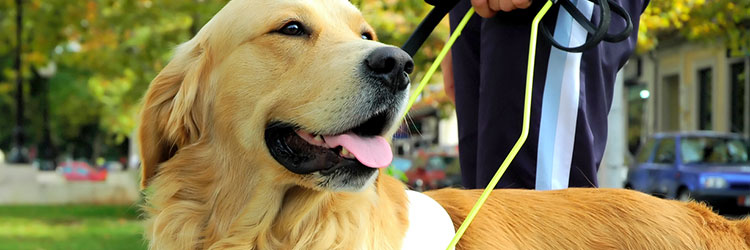 Things are a little different when it comes to children with special needs. There are some great benefits to bringing a pet into the family, particularly for a child with learning or behavioural difficulties.
Things are a little different when it comes to children with special needs. There are some great benefits to bringing a pet into the family, particularly for a child with learning or behavioural difficulties.
Autism friendly pets
There are as many as 100,000 children in the UK who have some form of autism. The spectrum varies greatly, from kids able to interact with others, to those unable to form conversations. It’s in these more extreme cases where pets can be helpful.
Children with autism can benefit from pets in much the same way as other kids, such as:
- Heightening social abilities
- Reducing stress
- Developing a healthier heart
- Improving their immune system
Experts also believe animals can be used to aid the behaviour and learning capabilities of autistic children.
Some of the most widespread issues face by a child with autism include:
- Self‐harm – Autistic children will often lash out at themselves. This includes anything from using an object to cause damage, to striking themselves (usually in the head) with their own hands. This behaviour can be calmed by specialist animals (often dogs) who are trained to deal with the situation. The animals will reach out and try to stop the hands of an autistic child. Their goal is to stop them striking themselves, and even offer support in the form of a cuddle.
- Inability to gage emotion – Part of autism is an inability to understand what or how others think. This can often be challenging for anyone, but autism makes it almost impossible. Pets won’t teach empathy to autistic children in quite the same way as they do to other kids, but they do help to make subtle changes and further a limited understanding.
- Non‐verbal communication – Some children with autism find it impossible to communicate verbally with others. As such, a pet is the perfect companion. They don’t have to rely on words, so it provides a child the chance to interact on a level they’re more familiar and comfortable with.
Autistic children have significantly varying traits when it comes to their behaviours and needs. As such, it’s impossible to suggest that one type of animal is right or wrong for every child.
This will depend largely on the kind of sensory stimulation a child is comfortable with:
- Able to accept sensory stimulation – Children who fall into this bracket can adapt well to any kind of animal which is pleasant to touch. This includes the likes of dogs, cats, rabbits, hamsters and guinea pigs.
- Unable to accept sensory stimulation – For kids who aren’t keen on touching, there are alternatives. Tortoises, turtles, snakes and some breeds of lizards stand out as the perfect options. These creatures don’t require much human contact, and are relatively slow and relaxed.
Giving someone on the autism spectrum this kind of outlet can help them to naturally integrate with others.
Animals to help with physical impairments
Some children have disabilities which make it difficult for them to do things many find simple. Trained animals can aid these kids in many ways. More often than not, this comes in the form of dogs.
These service animals will be able to perform a number of actions which make things considerably easier for someone with a physical impairment. Support could include:
- Picking up items which have fallen on the floor
- Opening doors and cabinets
- Helping someone to stand or sit down
- Retrieving items for their owner (in an emergency or otherwise)
- Pushing buttons
- Barking for help in an emergency when nobody else is around
Pets are also able to work alongside people with visual or hearing disabilities. We’ve all seen guide dogs caring for people out on the streets, but sometimes forget these animals are also close friends.
For young children especially, service animals are particularly important. They’ll serve as a crucial stepping stone between their own world and the one around them. Primarily, they’ll ensure people with an impairment aren’t left feeling trapped or isolated.
4. Advice for Parents
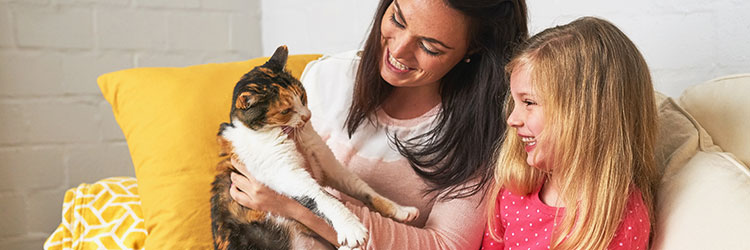 If you’re a parent looking to see your child benefit from the introduction of a pet, there are steps to take to ensure it’s the best experience. Let’s take a look at what parents can do in order to see their kids prosper with a pet.
If you’re a parent looking to see your child benefit from the introduction of a pet, there are steps to take to ensure it’s the best experience. Let’s take a look at what parents can do in order to see their kids prosper with a pet.
Choosing the right kind of pet for your family
Choosing the best kind of pet for the family is the most important part of bringing an animal into the home. When thinking about what pet you want to opt for, take certain considerations into account:
- Space – Do you have enough room in your home? If you already find your living space a bit cluttered, a larger pet isn’t a wise option. Think about how much room they’re going to need. If you can’t afford to sacrifice much of your home, your best bet might be to opt for a smaller pet, such as a hamster or fish.
- Budget – Consider how much money you can afford to spend. If you’ve only got a couple of hundred pounds spare at the end of the month, go for a pet which isn’t going to set you back much. For example, a pedigree dog is not the way to go in this circumstance.
- Lifestyle – Match a pet with the way you live your life. If you’re busy a lot of the time, don’t opt for an animal which needs a lot of care and attention. It’s unfair on them, as they’ll go neglected – even if you don’t mean for it to happen.
- Preference – You also need to take your and your children’s preferences into account. If the kids don’t like dogs, don’t get them one. It might seem like a smart way to tackle an engrained fear, but it won’t be enjoyable. If you or the kids have your hearts set on a certain animal, assess your suitability and follow through with it.
- Rescue – People often overlook the benefits of adopting a rescue animal from a shelter. This option provides a second chance for a pet which has gone through difficult times. These pets are often initially quite timid, and make sure that the animal is child friendly – the rescue centre should be able to tell you.
Once you’ve made your decision, commit to the responsibility. We’ve already seen how beneficial it is to bring a pet into your child’s life.
Activities which incorporate both pet and child
Heading out on family activities is a great way to bond. Sometimes pets get left behind, though. Here are some suggestions of things which both animals and little ones alike can enjoy:
- Doggy Cafes – These are becoming increasingly popular across the country. Some cafes allow people to bring their dogs along and enjoy a meal alongside their human owners. When events are hosted, they’ll be provided with their own kind of food, and can interact with other canines who’ve been brought along.
- Park Trips – A trip to the park is the perfect way of having fun with the whole clan – animal included. Again, this is probably more suited to dogs than any other kind of pet. Let your kids enjoy a day out in the sun, while bonding with a furry friend.
- Holidays – It’s not uncommon for families to take pets on holiday with them. If you’d like to jet yours off on your travels, you can do so – but remember to take certain things into account. These include:
- Getting vaccinations
- Considering whether your pet will be able to adapt to long-distance travel
- Getting a pet microchipped
- Get them treated for worms, fleas and tics
- Extend your Direct Line Pet Insurance policy to cover journeys to countries included in the UK Government’s Pet Travel Scheme.
- The Seaside – A day at the beach is great fun for kids, and dogs love running in and out of the sea. Just be prepared to deal with a sopping wet pooch, and abide by the doggy rules many beaches have in place.
5. Taking Care of a Pet
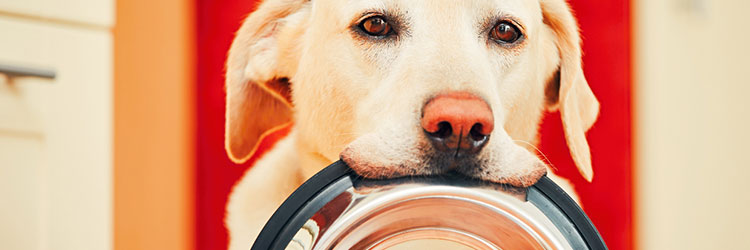
Adapting to having a pet in the house
It’s not as simple as bringing a pet home and expecting them to instantly gel to the new environment. You need to slowly introduce them into a new situation. There are several ways of achieving this:
- Slowly does it – Introduce dogs and cats to one room in your home each day. By slowly opening up access to new parts of your home the animal won’t be overwhelmed. Remember that this is a stressful time for pets, so don’t rush things.
- Get yourselves ready before the pet arrives – Make things easier by preparing for the new arrival in advance. Set the house up as it would be when the pet arrives and buy all the essentials. By being familiar with how things are going to be, your entire family will be able to better deal with the big changes a pet brings.
- Create a checklist ahead of time – Make a list of everything you’ll need to do before the pet turns up. This can be anything from documenting the items you’ll need to purchase, to creating a new daily routine for you and your children.
- Animal-proof – There are many ways you can pet-proof your home. This includes anything from placing child latches in front of cupboards to keeping sharp objects hidden. It’s not dissimilar from how you’d act with a young child. Also, be sure to familiarise yourself with common poisonous and harmful products to pets which can be found in and around your home.
- Be patient with them – Bonding isn’t instant. If there seem to be initial hurdles, have patience. Just like humans, pets need time to integrate to their new surroundings. If things don’t seem to be improving after a couple of weeks, you can consult a specialist.
Getting pet insurance
If you’re bringing a new pet into the home, it’s important to consider taking out pet insurance. Your pet may never require medical attention, but it’s better to be safe than sorry when it comes to the health of an animal.
Finding insurance which ticks every box isn’t easy. Direct Line provide pet owners with a wide range of options in this regard.
Some of the benefits include:
- 12 months’ worth of coverage for the price of 9
- 24/7 advice from a qualified vet
- A discount if you insure more than one pet on the same policy
- £8,000 coverage in vet fees with an advanced policy
- Dental cover included as standard with an advanced policy
The primary benefit of Direct Line’s Pet Insurance is cover for if your pet becomes ill or injured. An additional benefit is PAWSQUAD, which enables pet owners to keep in constant contact with a trained professional.
Basic caring advice
Different types of animals will naturally have varying care requirements. However, there are a number of factors which remain constant regardless.
- Maintaining a healthy diet – It’s important to guarantee a pet is getting the right balance when it comes to food. Just as with a person, too much food is going to cause them to become overweight and potentially damage their health. Similarly, they shouldn’t be lacking nutrition.
- Vet visits – It’s generally recommended pets should be taken for check-ups every year. This will ensure they remain in good condition, and allows for health and general progress to be monitored. Having constant updates is the best way to stay on top of, or prevent, medical conditions.
- Grooming – Furry animals need to be regularly kept clean and trimmed. Their coats are prone to collecting dirt and becoming matted. For the sake of hygiene for the whole family, it’s best to have them properly groomed once every couple of months. Between visits, grooming at home is also a great way of keeping an eye on their health.
- Preventing parasites – Fleas and worms are the most common form of parasites which attack an animal’s immune system. As a responsible owner, you should regularly worm and de-flea your pets to tackle any outbreak.
- Microchip – This is becoming an increasingly popular means of keeping a pet safe, and is a legal requirement for dogs. A tiny device no larger than a grain of rice is inserted into an animal. The microchip helps identify a pet in a matter of seconds once scanned. Be sure to keep the details stored on the chip up-to-date when moving home.
Follow these basic caring steps to improve the health and happiness of your pet.
6. Useful Links & FAQs
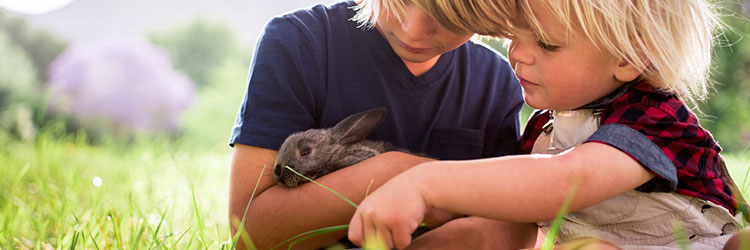 We’ve covered a lot in this guide, but you may still have further questions. If you do, check our list of FAQs.
We’ve covered a lot in this guide, but you may still have further questions. If you do, check our list of FAQs.
FAQs
- Q1Can a pet help a child with ADHD?
- Q2Can pets get head lice from children?
- Q3Is it possible for a child to become infected by a disease a pet has?
- Q4What are some pets to avoid for kids?
Useful Resources
If you’d like to discover more about the impact of pets on a child’s health, and their role in family life as a whole, check out some of these secondary resources:
American Humane analyse several ways to proof your home against dangers for pets:
https://www.americanhumane.org/fact-sheet/pet-proofing-your-home/
Anxiety BC look at how the condition impacts children:
https://www.anxietybc.com/parenting/social-anxiety-disorder
Apartment Therapy offer advice on introducing a new pet to the home:
http://www.apartmenttherapy.com/tips-for-settling-pets-into-a-new-home-194075
Gretchen Carlisle argues how pets help to benefit children with autism:
https://www.autismspeaks.org/science/science-news/more-evidence-pets-foster-social-skills-children-autism
Country Living break down the cost of purchasing different breeds of pedigree dogs:
http://www.countryliving.co.uk/wildlife/pets/a865/most-expensive-dogs/
The Government provide a list of zoonotic diseases:
https://www.gov.uk/government/publications/list-of-zoonotic-diseases/list-of-zoonotic-diseases
PFMA analyse the pet population in the UK as of the most recent collection of data:
http://www.pfma.org.uk/pet-population-2016
Purina analyse how owning a pet can change the life of an autistic child:
https://www.purina.com/better-with-pets/pet-welfare/how-pets-can-transform-the-lives-of-autistic-children
Vetstreet talk about how dogs reduce stress:
http://www.vetstreet.com/our-pet-experts/8-ways-your-pet-can-help-relieve-your-stress
